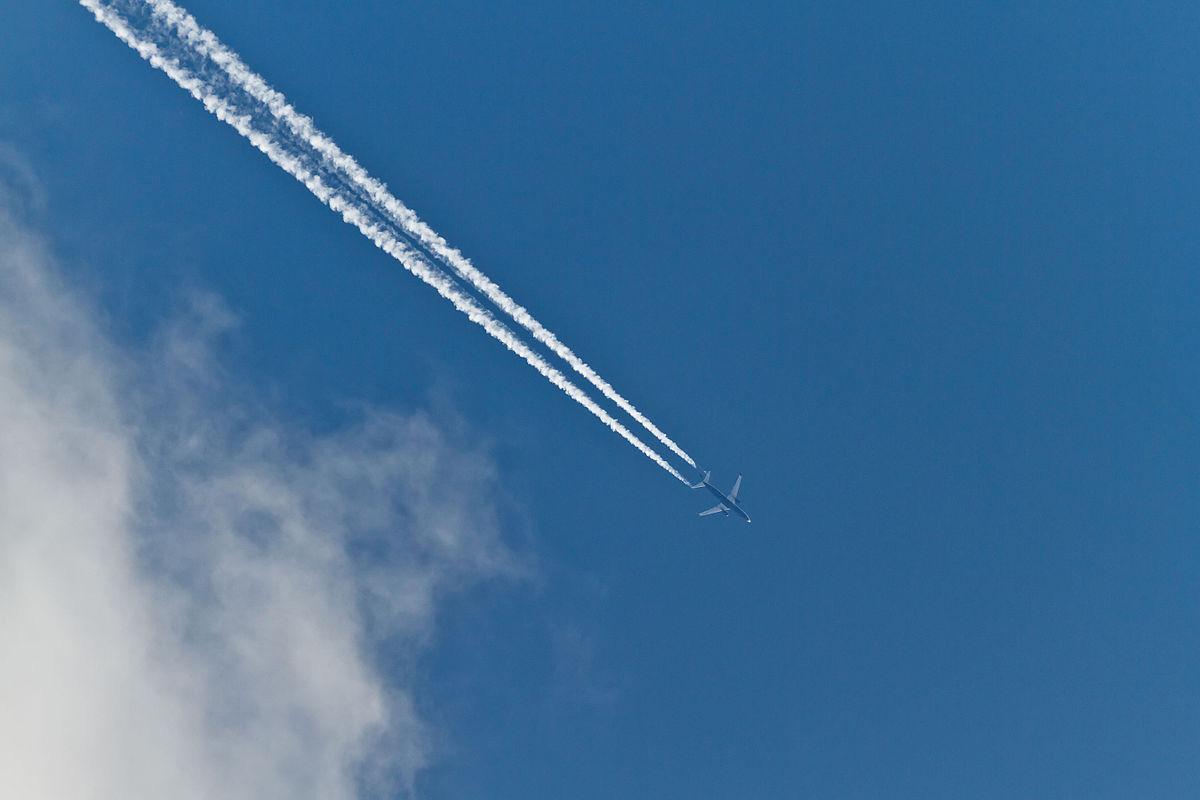Airplane Contrails, on today's Moment of Science.
Have you ever seen a perfectly cloudless sky? Cloudless--that is--except for two or three long white lines smeared across the perfect blue sky by airplanes like smudges on a pane of glass. Why do airplanes sometimes leave contrails behind? Actually, contrails, short for condensation trails, are essentially clouds. They are no different from the cirrus clouds that naturally form in that region of the atmosphere.
High in the atmosphere, water can exist in one of two basic forms. It can either be invisible water vapor--a gas--or it can condense around microscopic dust particles into tiny droplets or ice crystals. Every cloud you see is made of tiny droplets or crystals like this, and so is a contrail.
To make an airplane contrail, you need water and some kind of microscopic particle for the water to condense around. When jet fuel burns, it releases both water vapor and microscopic particles of exhaust. A contrail occurs when the jet's water vapor condenses around its own exhaust particles.
If you see a plane that's leaving no contrail--or a very short one--this means the upper atmosphere is relatively dry. Dry air reabsorbs the water as invisible vapor almost as soon as it condenses. On the other hand, if you see a contrail that lasts a long time, this means the upper atmosphere is already saturated with as much water vapor as it can hold.










